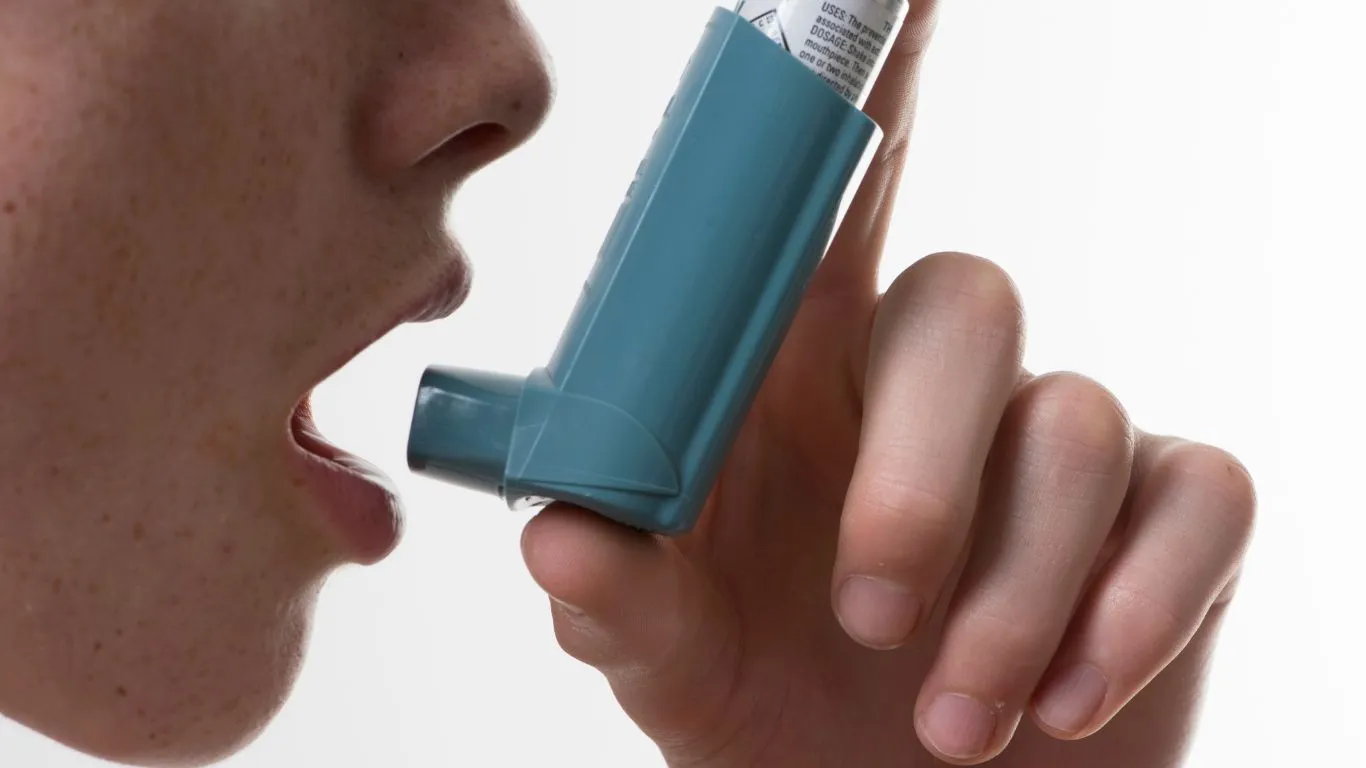Can Exercise Worsen Asthma Symptoms? How to Manage Asthma and Stay Active
So, you’ve got asthma, and you’re wondering whether exercise is a friend or foe. Honestly, it’s a bit of both. On one hand, staying active is awesome for your lungs and overall health. On the other hand, if you’re not careful, exercise can sometimes make asthma flare up and leave you gasping for air. Don’t worry, though—I’m here to break it all down for you, and we’ll figure out how to make it work.
The Deal with Asthma and Exercise 🏃♂️💨

Alright, let’s start with the basics. Asthma is when your airways are extra sensitive and get inflamed or constricted, making it hard to breathe. So when you hit the gym or go for a run, your body demands more oxygen, which can cause your airways to tighten even more, especially if you’re in a cold, dry environment, or if there’s a lot of pollen or pollution in the air.
But here’s the thing: Exercise doesn’t automatically make your asthma worse for everyone. In fact, it can actually help improve your lung function if you manage it right. It all comes down to your triggers, your workout, and how prepared you are.
Can Exercise Actually Trigger Asthma Symptoms? Yep, It Can! 😬
Unfortunately, it’s true. For some people, intense physical activity can spark asthma symptoms—especially if you’ve got something like exercise-induced bronchoconstriction (EIB) on your hands. It’s basically when your airways react to exercise by tightening up, which can leave you wheezing or feeling short of breath. Not fun, right?
But that doesn’t mean you have to skip exercise altogether! You just need to be smart about it.
Why Exercise Might Make Asthma Worse 🧐

Here are a few reasons why exercise might not be your asthma’s best friend:
- Weather Conditions: If it’s cold and dry out, your airways might not be too happy. Ever notice how you feel out of breath when you exercise on a chilly day? That’s why.
- Allergens: If you’re exercising outside during allergy season, pollen can make things worse. Same goes for pollution.
- Exercise Intensity: High-intensity workouts (like sprinting or running) can really push your lungs to the limit, so it’s easy for symptoms to show up.
- Asthma Triggers: If you’re dealing with a cold, stress, or another illness, you might be more prone to asthma attacks during exercise.
Can Exercise Worsen Asthma Symptoms? It’s All About How You Play It 💥

The short answer? Yes, it can—especially if you don’t take a few precautions. But don’t freak out! There’s a lot you can do to stay active without triggering an asthma flare-up.
Here’s What Works for Me (and You!) 🏋️♂️
- Prep Like a Pro: I’ve learned the hard way that warming up properly before exercise is key. Doing some light stretching or a brisk walk gets my lungs ready for action. I also always carry my inhaler, just in case.
- Pick the Right Workout: You don’t need to be running marathons to stay fit. Low to moderate-intensity exercises like walking, swimming, or biking are great options for people with asthma. Plus, swimming is awesome because the air is moist, so it’s easier on your lungs.
- Mind the Triggers: Keep an eye on the weather, pollen counts, and air quality. If it’s a high-pollen day, I’ll stay indoors and hit the treadmill instead. No shame in that.
- Medication Is Your Friend: My doctor prescribed me a pre-workout inhaler, and it’s been a game changer. If you haven’t talked to your doctor about this, it might be time to do so!
Troubleshooting Common Issues with Asthma and Exercise 🛠️

Now, let’s troubleshoot a few things that might pop up when you’re working out with asthma.
Issue 1: Feeling Winded? 😤
It happens. You’re in the middle of a workout, and you suddenly feel like you can’t catch your breath. If this happens to you, it’s probably because your airways are constricting. I usually stop and do some slow, deep breaths—focus on relaxing my body. If I need to, I’ll use my inhaler before continuing.
Issue 2: Tight Chest After Exercise 😣
I’ve had this one too, and it’s not fun. If your chest feels tight or you’re wheezing, take a break and sit down for a minute. Hydrate, and make sure to use your medication. Also, try some breathing exercises like pursed-lip breathing, which can help ease the tightness.
Issue 3: Frequent Flare-Ups from Intense Workouts 😬
If you’re finding that intense exercise (like running) regularly triggers your asthma, it might be time to dial things back. Try a lower-intensity activity like yoga or cycling instead. Trust me, your lungs will thank you!
Real-Life Success Stories: Asthma Doesn’t Have to Hold You Back 💪
I’ve heard some amazing stories from people who’ve figured out how to exercise with asthma. Here are a couple of them that really stand out:
Success Story 1: Sarah’s Journey to Fitness 🏋️♀️
Sarah always hated the idea of working out because she was convinced it would trigger an asthma attack. She decided to give it a shot after talking with her doctor. With the help of a pre-workout inhaler, she started with walking and then slowly worked up to some strength training. Now, she hits the gym regularly and feels better than ever. She’s proof that with the right preparation, exercise doesn’t have to be a scary thing for people with asthma.
Success Story 2: Mark’s Swimming Triumph 🏊♂️
Mark, a competitive swimmer, struggled with asthma for years. At first, the chlorine in the pool triggered his symptoms, but he didn’t give up. He worked closely with his doctor to adjust his medication and tried different breathing techniques. Now, Mark swims for hours without any issues and even competes in local events. Swimming turned out to be the perfect workout for him, and it could be for you too.
Key Takeaways / Summary 🎯
– Yes, exercise can worsen asthma symptoms, but with the right precautions, you can totally work out without issues.
– It’s important to warm up, pick lower-intensity exercises, and avoid your asthma triggers.
– Make sure you’ve got your medication and inhalers handy—don’t skip that step!
– If you’re feeling winded or having trouble, take a break and use your inhaler as needed.
In short, don’t let asthma stop you from staying active. There’s always a way to make it work!
FAQs About Exercise and Asthma 🧐
- Q1: What’s the best exercise for people with asthma? Swimming, cycling, and walking are all great options. Low-impact and controlled environments help avoid asthma triggers.
- Q2: Can I exercise if I have asthma? Absolutely! Just make sure you warm up properly and have your medication with you. Gradually increasing the intensity is key.
- Q3: Should I stop exercising if I feel an asthma attack coming on? Yep! If you feel an attack coming on, stop immediately, take your inhaler, and rest. Never push through it.
- Q4: Is it normal to wheeze a little after exercise? A bit of wheezing is normal for some, but if it’s persistent or severe, check in with your doctor to adjust your treatment plan.
References 🔗
Disclaimer ⚠️
This post is just for informational purposes. Always talk to your doctor before starting any new exercise routine or making changes to your asthma treatment.
Call to Action 📝
Feeling inspired to get moving? Talk to your doctor, figure out what works best for you, and start exercising today! If you’ve got questions or want to share your own experience with asthma and exercise, drop a comment below. Let’s do this together! 💪🌟

Bianca Nala is a skilled writer with a deep focus on respiratory disorders. Her articles on Healthusias.com reflect her expertise, providing readers with reliable and engaging insights into respiratory health.





